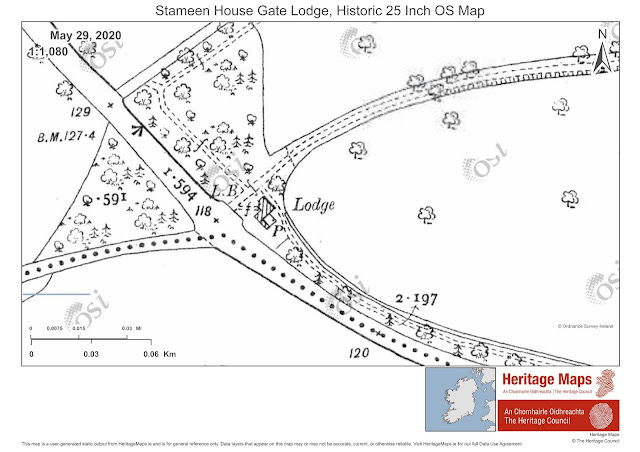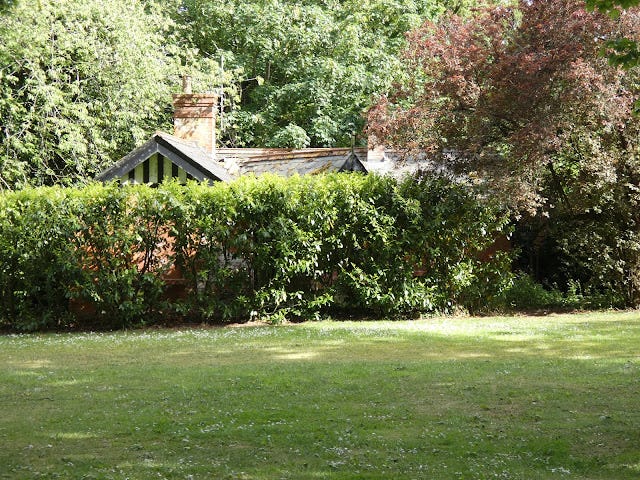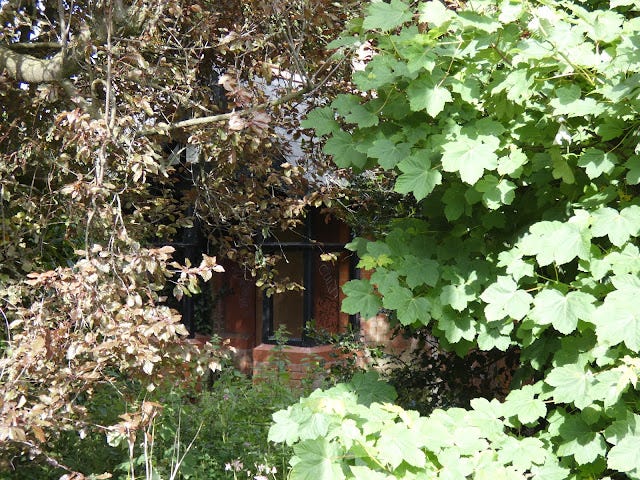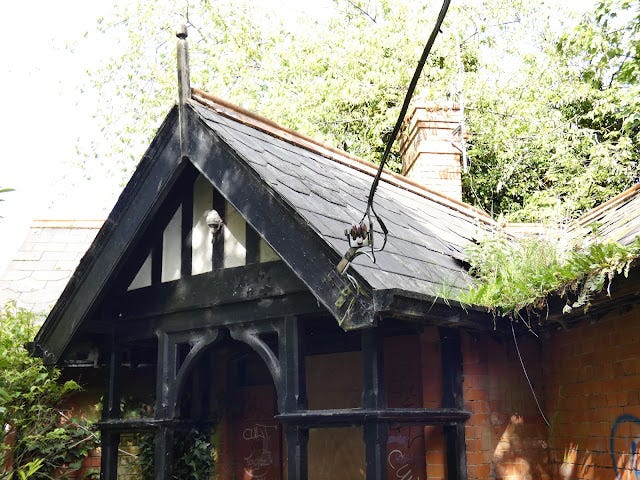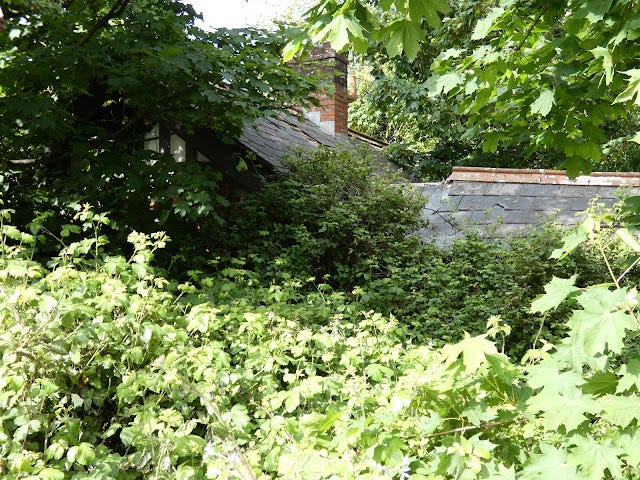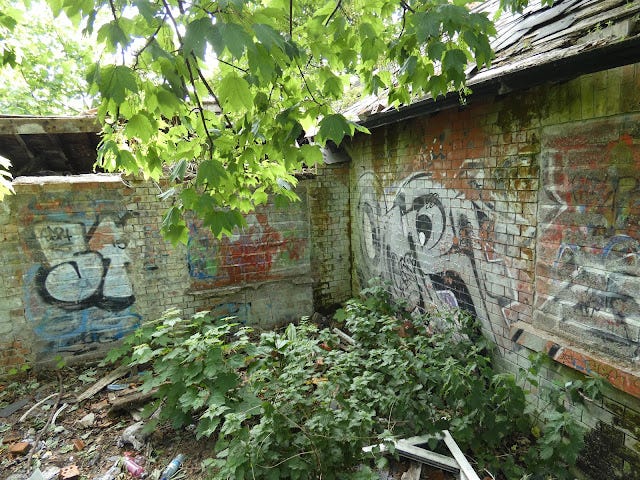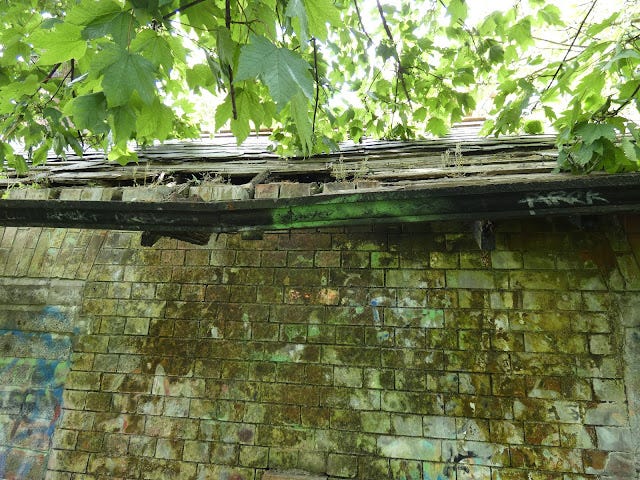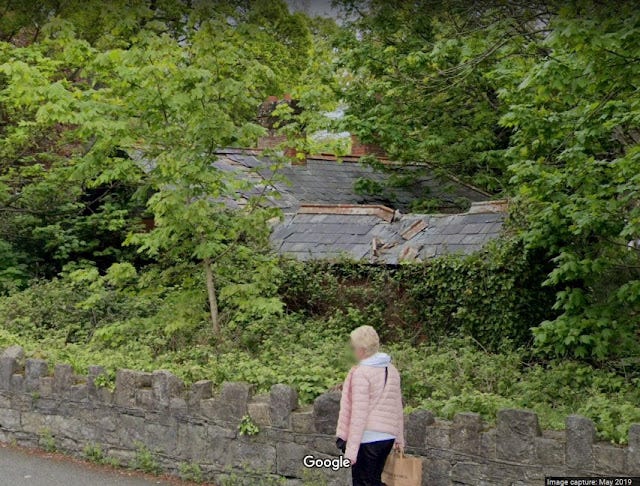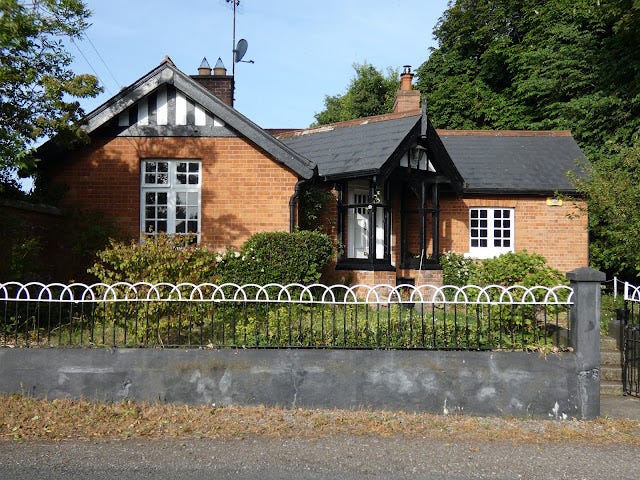Boyne Valley Hotel and Country Club (Stameen House) Gate Lodge
A once charming 19th century gate lodge in Drogheda Co. Louth that is in urgent need of rescue
With the Covid-19 restrictions still in place here in Ireland we are confined to a five kilometer radius of our homes. This means that in order to get our "fix", wannabe archaeologists and historians like myself have to look closer to home. Like many of us, I have been pouring over the maps and datasets on the wonderful HeritageMaps.ie website and doing some "exploring" to learn more about my local area. Places that were previously passed by unnoticed and unappreciated are having their day in the sun. This phenomenon has been excellently enhanced, and captured, by the innovative "KnowYour5K" project, a collaboration between the Heritage Council of Ireland’s Adopt a Monument Scheme and the National Museum of Ireland. This initiative, which invites the public to submit photographs and information on heritage sites close to them is very much worth supporting, browsing, and taking part in.
To this end, I set out to take a closer look at the nearby Boyne Valley Hotel and Country Club, located on the main Dublin road on the way into Drogheda, Formally known as Stameen House and Cotton Hall, The Boyne Valley Hotel is a former Italianate mansion converted into a large hotel, complete with leisure center (the "Country Club") and extensive gardens. There are also a number of historic outbuildings, including a gate lodge. The gate lodge, adjacent to the main road at the start of the long avenue to the hotel, caught my interest as I had passed it innumerable times over the years without a second thought or glance.
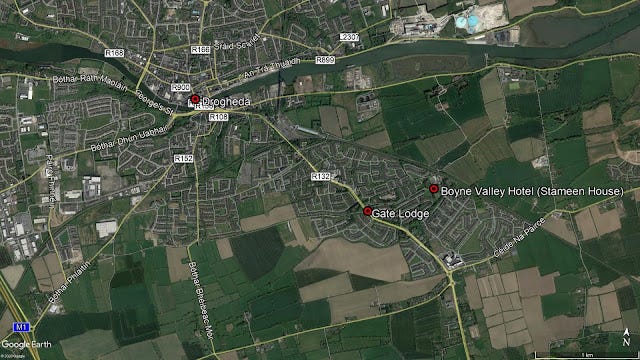
The purpose of gate lodges evolved over time. Initially, in the 1700s when large landowners began constructing them, they played a practical role. Constructed adjacent to the main road they secured the entrance to the avenue leading to the "big house", dealing with both unwanted callers and those on business below the concerns of the family, deliveries and the like. As they were located adjacent to the main public road they were the first sight visitors to the house would see, and for passersby the gate lodge was very much the "public face" of the estate. As the decades passed and security concerns lapsed, these factors rose to the fore and the gate lodges became status symbols reflecting the style, taste and wealth of the estate owner.
In the mid 19th Century the Boyne Valley Hotel was known as "Cotton Hall", so named because its owner, John Magrane, a weaver, grew flax in the forty acres surrounding the house. A number of housing estates occupy this land now including Stameen and Castlewood. After Magrane's death in the 1850s, his daughters sold the property to William Cairnes, a businessman and brewer, who owned a brewery on the Marsh Road in nearby Drogheda.
After purchasing the property Cairnes engaged the noted architect W.F. Caldbeck of Dublin to extensively remodel and expand the house. Cairnes also laid some fine gardens taking full advantage of the stream which flowed through the grounds. Our gate lodge was also constructed around this time.
An examination of the historic OS maps clearly shows the development of the house and grounds. Click Here to view the maps on the HeritageMaps.ie website.
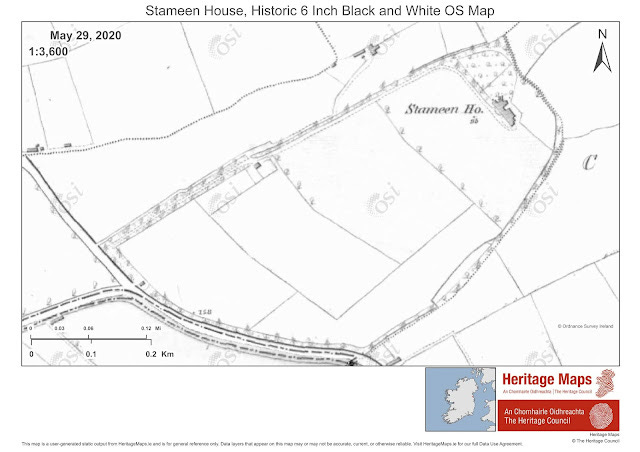
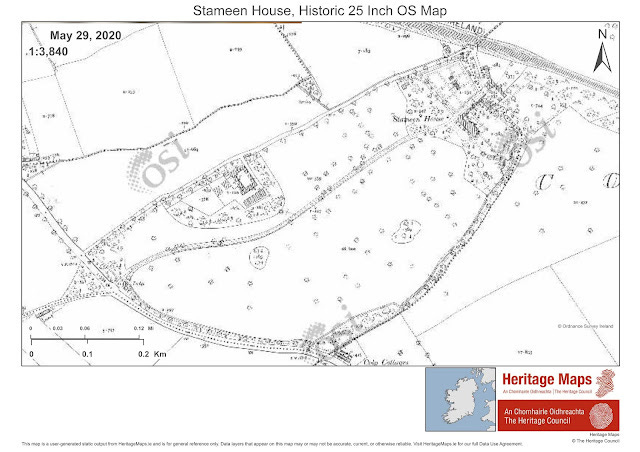
The Cairnes family eventually sold the property about one hundred years after William purchased it, and it became a hotel, initially "Stameen House Hotel" and then the more marketable "Boyne Valley Hotel". The McNamara family purchased the Boyne Valley Hotel in 1992 and operated it until it went into receivership following the 2008 economic crash. The Boyne Valley Hotel, leisure centre and grounds were eventually sold by the receivers in 2014 (more on this later).
The gate lodge sat for all these years at the entrance to the "Boyne Valley Drive", the local name for the long avenue to the hotel. It was witness to a significant event during the course of the Irish revolutionary period of 1913 to 1923. On the 30th April 1922 (a Sunday) a group of anti-treaty IRA members lay in wait and ambushed a group of British soldiers and RIC men from Gormanston who were sent to fetch and escort a protestant minister for Sunday service. The IRA blocked the road beside the gate lodge with carts and opened fire, killing one, Constable Benjamin Bentley. The Black and Tans later went on a rampage in Drogheda, indiscriminately firing into houses and shops in the early morning and setting fire to a number of properties including the Colp Cottages, located adjacent to the entrance to the modern Stameen housing estate. This was a significant event as it occurred between the signing of the Treaty and the beginning of the Civil War. It clearly demonstrated the split in local IRA forces between pro and anti Treaty factions. The IRA, who occupied the barracks at Millmount in Drogheda town, would later be shelled out of their position by the Free State army using artillery borrowed from the British. The Civil War in Drogheda makes for interesting reading (and debate!) but this is a discussion for another day. Let us return to our gate lodge, in more modern times...
When the nearby Castlewood housing estate was being constructed around the turn of the century the entrance from the main Dublin road to the Boyne Valley Hotel was reconfigured. The old entrance, immediately adjacent to the gate lodge, was closed off and a new entrance to serve both the estate and hotel was opened some 45 meters further up the Dublin road. This meant that traffic no longer went past the gate lodge. It was now a gate lodge without a gate. The "old" tarmac road outside the gate lodge was eventually covered in grass.
For much of the time the McNamara's operated the Boyne Valley Hotel the gate lodge acted as over-spill accommodation for the hotel with guests staying in the gate lodge. The gate lodge itself is an L-plan, three-bay, single-story property built in the Tudor style and constructed with red brick. It features terracotta ridge tiles with an attractive gabled entrance porch and timber barge boards. The gate lodge contains two bedrooms, a bathroom and a kitchen/living room area.
The McNamara's however, had greater ambitions for the gate lodge. They made two planning applications concerning the gate lodge in the early 2000s. Firstly, in 2001, they submitted a plan to knock down the gate lodge, destroy a number of protected trees and construct six apartments in its place. The application failed following objections from nearby residents and the Department of Heritage.
The second planning application, in 2006, was to develop the gate lodge into a public house. This application included a proposal to knock down part of the house and the addition of an extension. This application was initially rejected and again rejected on appeal, following numerous objections. The planning authorities gave a number of reasons for refusing permission on this occasion including a central objection to the proposal to change the use of the gate lodge from residential to commercial use. It seems that around the time of the 2006 application the Boyne Valley Hotel ceased using the gate lodge as overflow accommodation as the application documentation refers to the building suffering from some vandalism.
A common factor to both failed applications is the fact that the gate lodge, as detailed in the applications and the various associated documents, is a Protected Structure.
The Boyne Valley Hotel gate lodge is included on the County Louth Record of Protected Structures (pg 150, DB-056). It is important to note that the gate lodge does not have to be individually listed (although lodges are mentioned in the listing for the Boyne Valley Hotel) as the protection extends to the "interior of the structure; to the land in its curtilage; and to any other structures on that land and their interiors". Protected structures are commonly described as "listed buildings". This description is not technically correct, but in any case, a building being a Protected Structure means that it is a structure that a "planning authority considers to be of special interest from an architectural, historical, archaeological, artistic, cultural, scientific, social or technical point of view. If you are the owner or occupier of a protected structure, you are legally obliged to prevent it becoming endangered, whether through damage or neglect." The two quotations above are taken from the Protected Structures entry on CitizensInformation.ie which gives a good overview of what a Protected Structure is and what responsibilities owners of Protected Structures have. Essentially, owners of Protected Structures are legally obliged to look after and protect said buildings and "make sure that the structure does not become endangered through neglect, decay, damage or harm." Should they neglect these legal duties the planning authority (the Council) have a number of enforcement options available to them to ensure the protection of the building. This brings us to the current state of the Boyne Valley Hotel gate lodge.
Sadly, despite being a Protected Structure, the gate lodge today is in a horrendous state and is most definitely an "at risk" building. It seems that after the failed planning applications the gate lodge has been almost completely abandoned and left to fall into dereliction. Neglect is not the only issue, vandals have damaged the building also and the walls of the rear courtyard have been toppled.
I mentioned at the beginning of this piece that I have passed the gate lodge many times without a second glance, this is not surprising as vegetation has obscured a lot of the building. Some of this, particularly at the side of the building facing onto the main road, is merely nature taking its course. But, appallingly, trees and bushes have been planted at the front of the gate lodge, presumably to hide and obscure the decaying building. I took a series of pictures, which certainly convey the state of the building better than words can.
The Front of the Gate Lodge
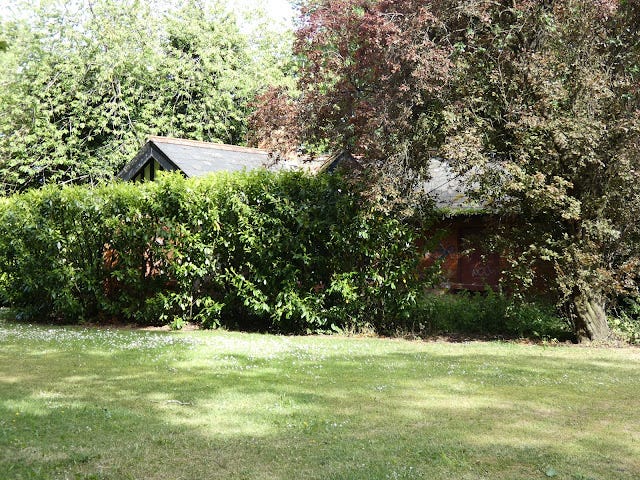
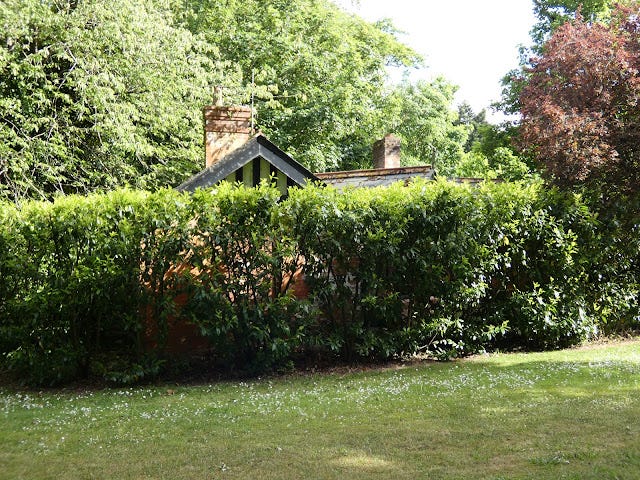

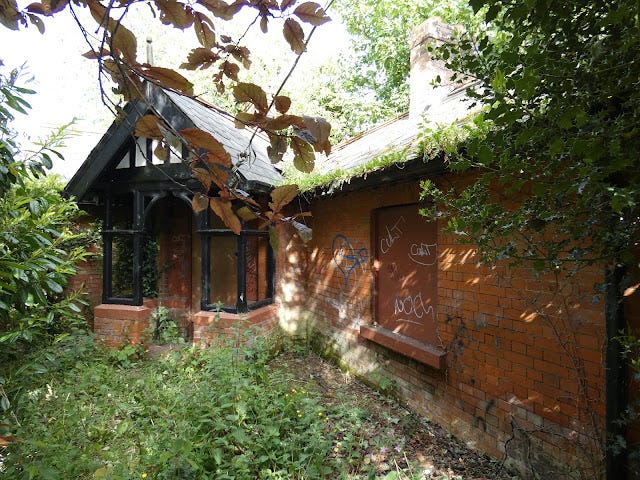
The Sides of the Gate Lodge
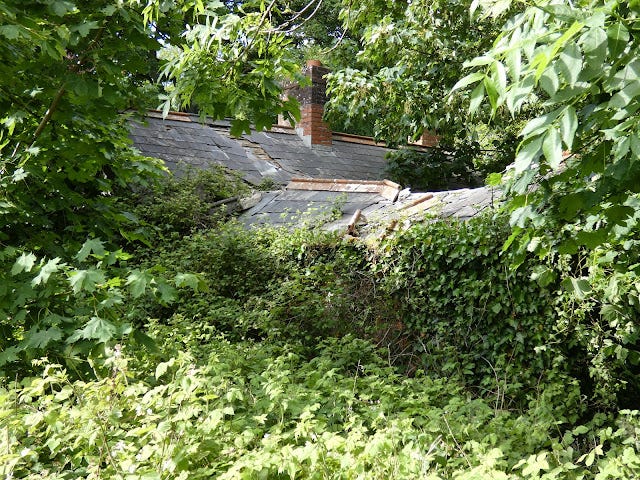

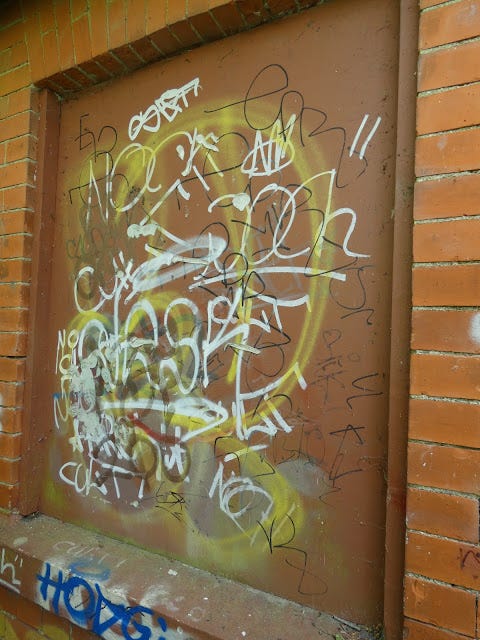
The Rear of the Gate Lodge
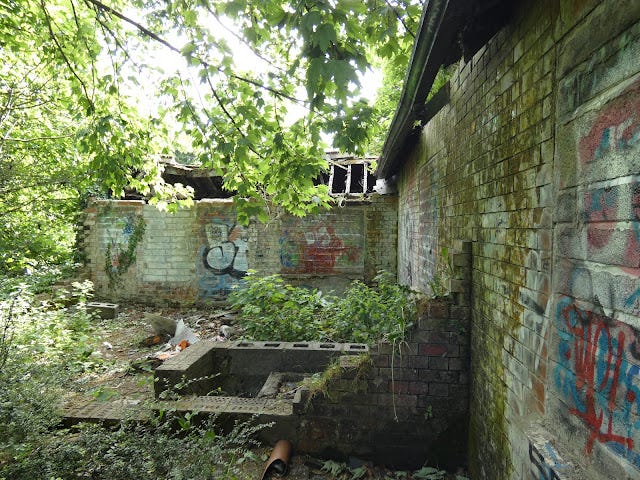
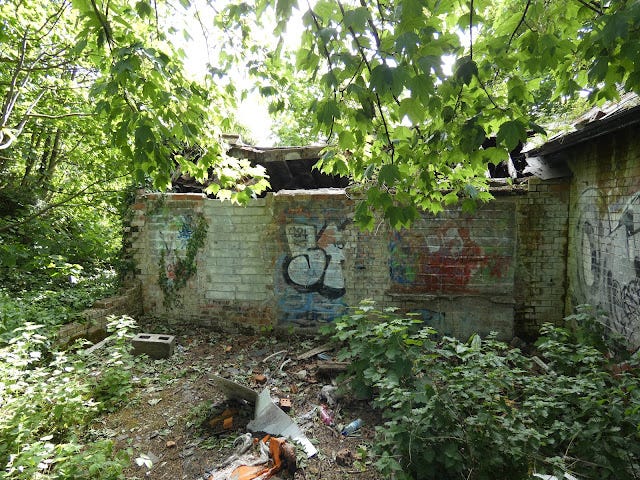
There was no access to the interior of the gate lodge but one can assume that it is not in good shape either, to say the least. I was quite surprised to see the extent of the damage at the rear of the property because the front of the gate lodge looked to be in reasonable shape. It is clear urgent action is required to secure and protect the building.
Since the Boyne Valley Hotel and Country Club was purchased in 2014 extensive (and presumably expensive!) works have been undertaken at the hotel itself. The grounds have also been subject to significant landscape remodeling. As for the gate lodge, it has been seemingly left abandoned, save for the installation of security fencing at its rear. Indeed, security fencing has been erected around the entirety of the hotel's grounds.
As alluded to previously, the Boyne Valley Hotel was purchased out of receivership (BDO accountants were appointed as receivers in 2010) in 2014. The asking price was €1,500,000. Media reports at the time indicated that the Boyne Valley Hotel and Country Club was sold to Cork-based Atlantic Hospitality Services (I think this may be an error, perhaps AHS were the management company running the hotel, but not the owners). A recent planning application (2017) indicates that the Boyne Valley Hotel and Country Club is currently controlled by Loch Fada Property Limited, with Seamus McGoldrich and Wolfgang Reipold named as directors. The planning documentation indicates that the ownership commenced on the 31st January 2014.
As for the gate lodge, it is clear that unless the current owners, whoever they are - or the Council - act promptly this significant building will degrade further, perhaps beyond the point of no return.
Currently, despite the decay shown in the photographs, the core of the building seems relatively intact and the gabled porch remains in reasonable shape. The building could be restored to provide an attractive home for someone or indeed it could be utilised as over-spill accommodation once more.
To be fair to the current owners, the neglect seemingly began before they arrived on the scene and it appears the trees at the front of the gate lodge were planted prior to their purchase of the Boyne Valley Hotel and Country Club. There may also be plans afoot to restore and maintain the gate lodge of which I am unaware, (although no planning applications in respect of the gate lodge have been submitted, which would be necessary before any work or restoration could be carried out) but it is clear that works are needed urgently, decay and damage has accelerated in recent years. Of particular concern is the fact that part of the roof has collapsed and the rest of the roof is not far behind. The building, in its current state, is very vulnerable to further vandalism. The trees, planted so close to the front of the building, should also be removed.
The following images give a little insight into the timeline of the decay of the building over the past 15 years or so and underline that the level of dereliction has accelerated recently, particularly within the last two years.
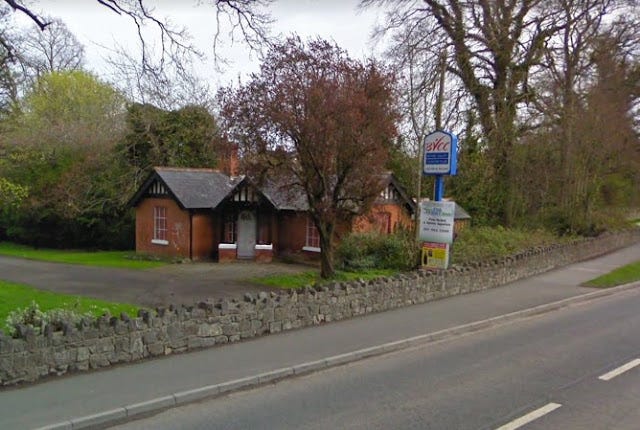
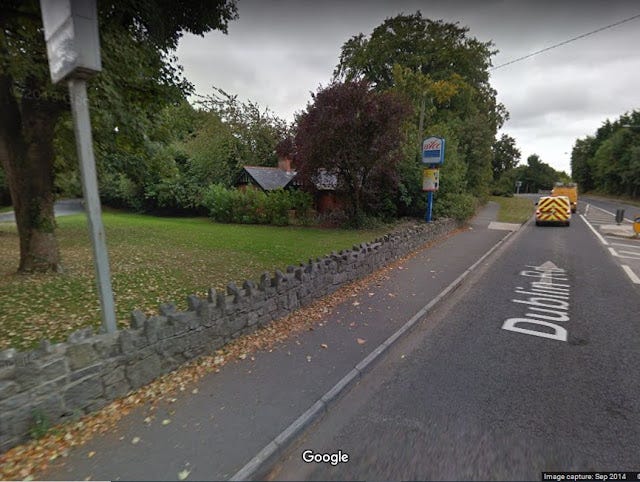
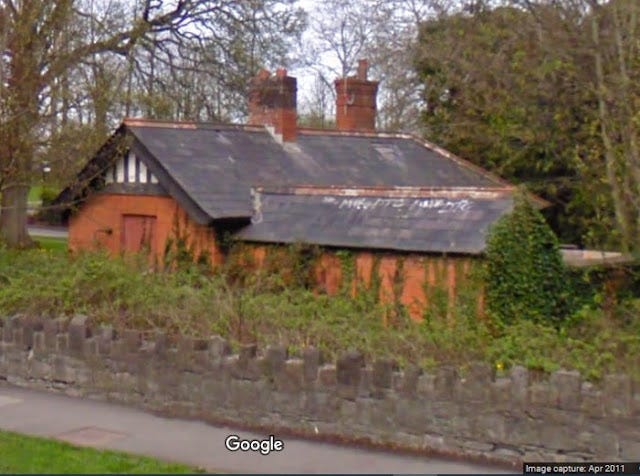

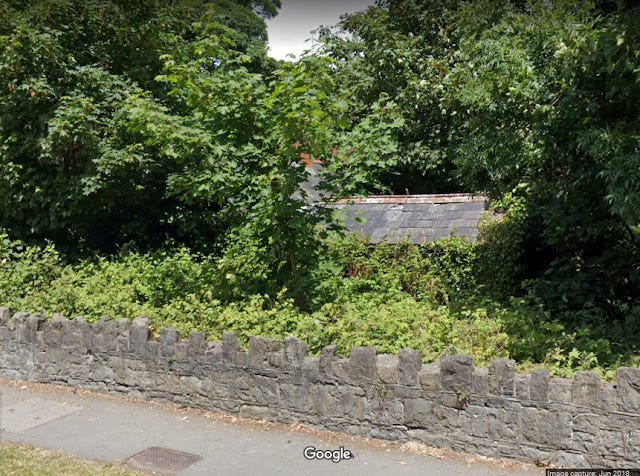
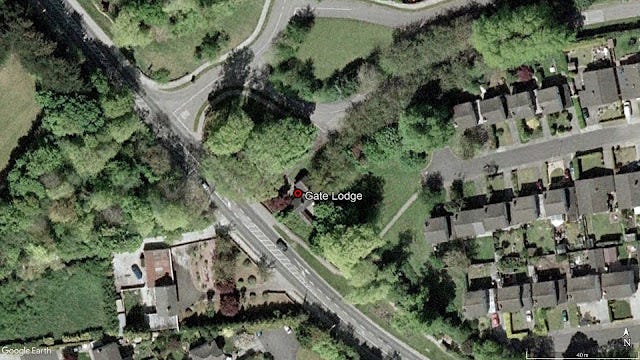
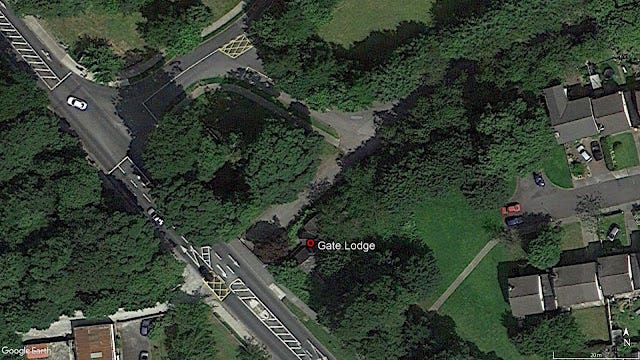
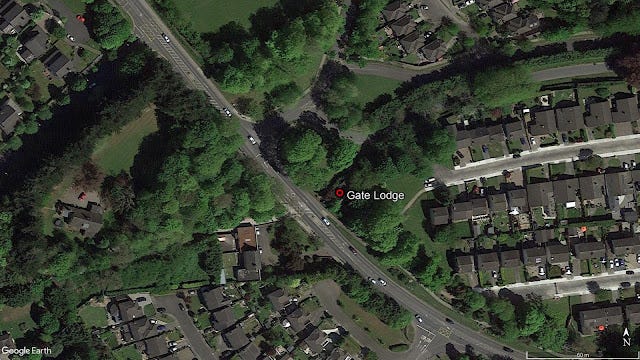
One needn't look far to see what the gate lodge could look like. An identical gate lodge was constructed around the same time in the 1850s at the nearby Glen House on Mill Road. It has an entry on the National Inventory of Architectural Heritage, viewable here. It has seemingly been maintained as a private residence and its charming appearance is in stark contrast to the sad, dilapidated state of the Boyne Valley Hotel/Stameen House gate lodge. Should the Boyne Valley Hotel gate lodge be restored to such condition it would make a valuable architectural contribution to the streetscape.
The Boyne Valley Hotel gate lodge could, and should, look like its sister gate lodge at Glen View on the Mill Road.
Perhaps some readers might know something more (very interested to know more about the interior!) about the Boyne Valley Hotel and Country Club/Stameen House gate lodge. Please feel free to comment below.
Update September 2020: It seems the Gate Lodge is to be repaired! See here for more:
https://www.theirishantiquarian.com/2020/09/an-update-on-stameen-house-boyne-valley.html
References and Further Reading
Journal Articles
'Cairnes of Stameen', John McCullen, Journal of Old Drogheda Society, 1990 (no.7).
Maps
https://www.heritagemaps.ie/WebApps/HeritageMaps/index.html (OSI Maps).
https://www.google.com/earth/ (Satellite images).
https://www.google.com/maps (Streetview images).
Planning Applications
Throughout the course of this article, I have referred to a number of planning applications and their associated documents. These applications, and the files, can be viewed on the Louth County Council eplanning website by clicking on the links below or searching for the reference number.
Planning Application: 01510249 (Louth County Council - 2001 application for six apartments).
Planning Application: 06510363 (Louth County Council - 2006 application for a public house).
Planning Application: 1730 (Louth County Council - 2017 application for various works at the main hotel buildings and leisure center).
Other Blogposts/Websites
https://www.hospitalityenews.ie/index.php/20-news/latest-news/4746-drogheda-hotel-sold
https://www.boynevalleyhotel.ie/en/
https://www.ouririshheritage.org/content/archive/place/knowyour5k/live-map
https://www.irishtimes.com/culture/books/threat-of-extinction-stalks-irish-gate-lodges-1.2899422
https://wordwellbooks.com/Lodges
https://www.louthcoco.ie/en/services/planning/online-planning-maps/
Books
Hall, Donal & Maguire Martin (Editors), 'County Louth and the Irish Revolution 1912 - 1923' (Irish Academic Press, 2017).




